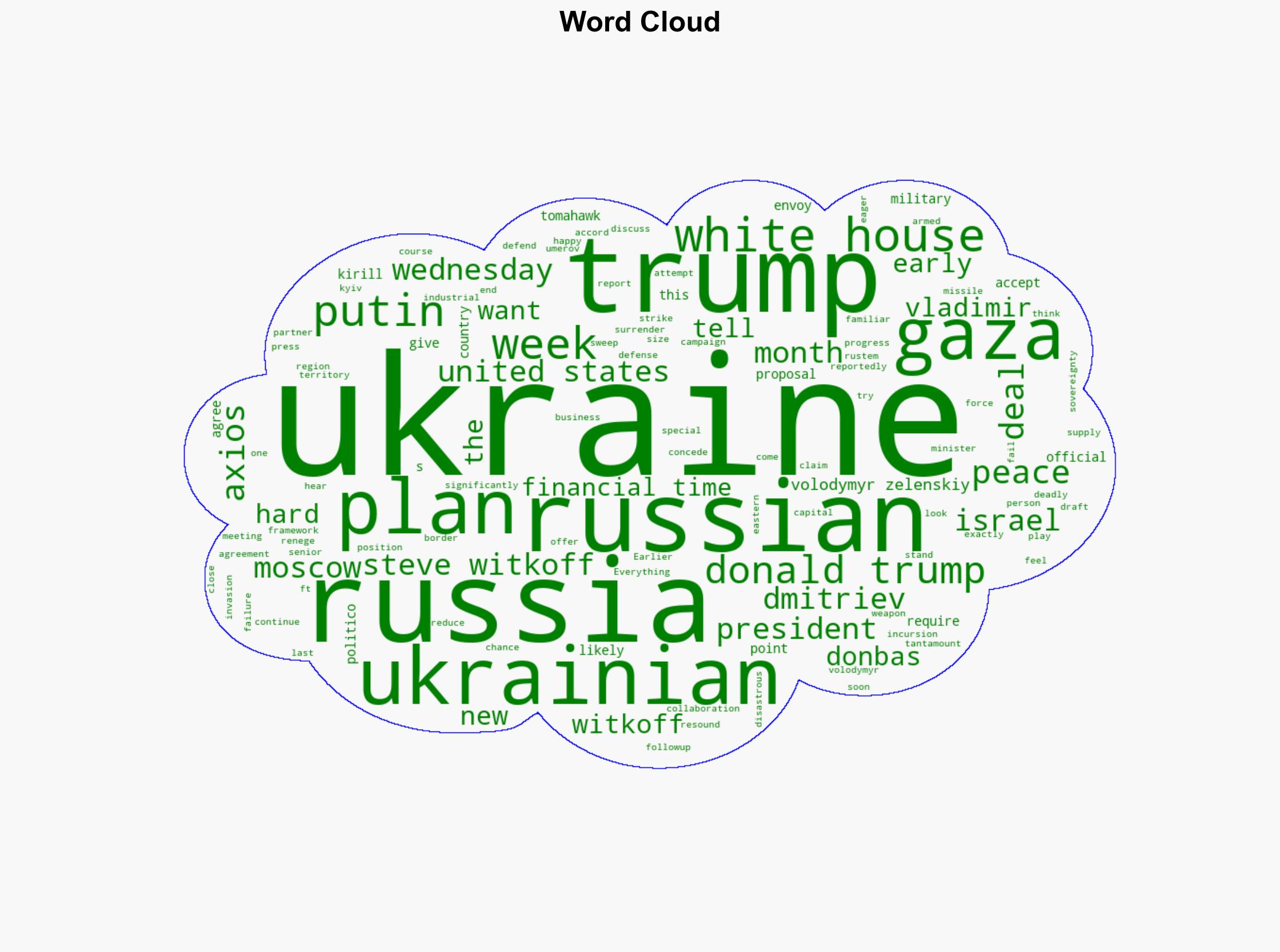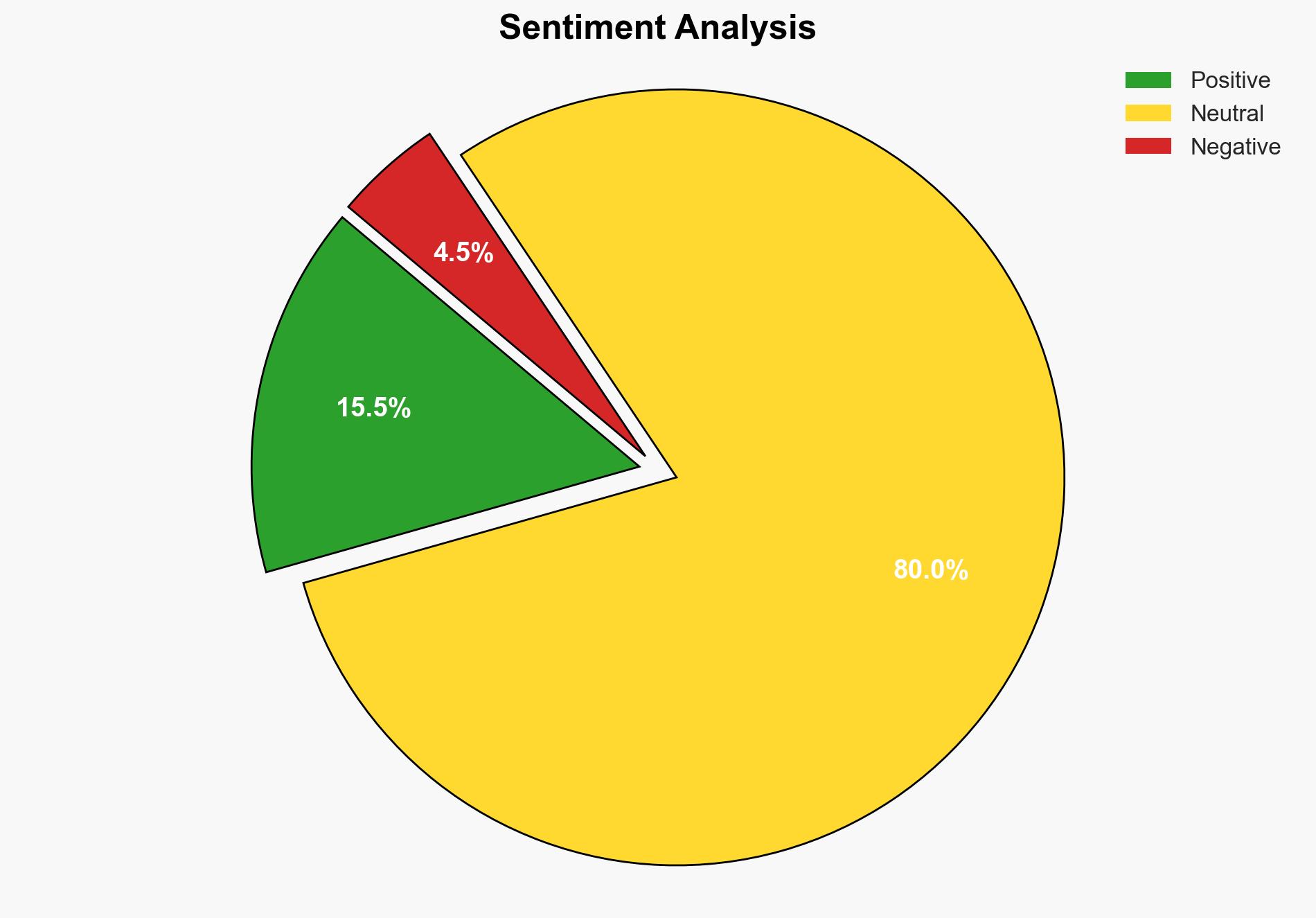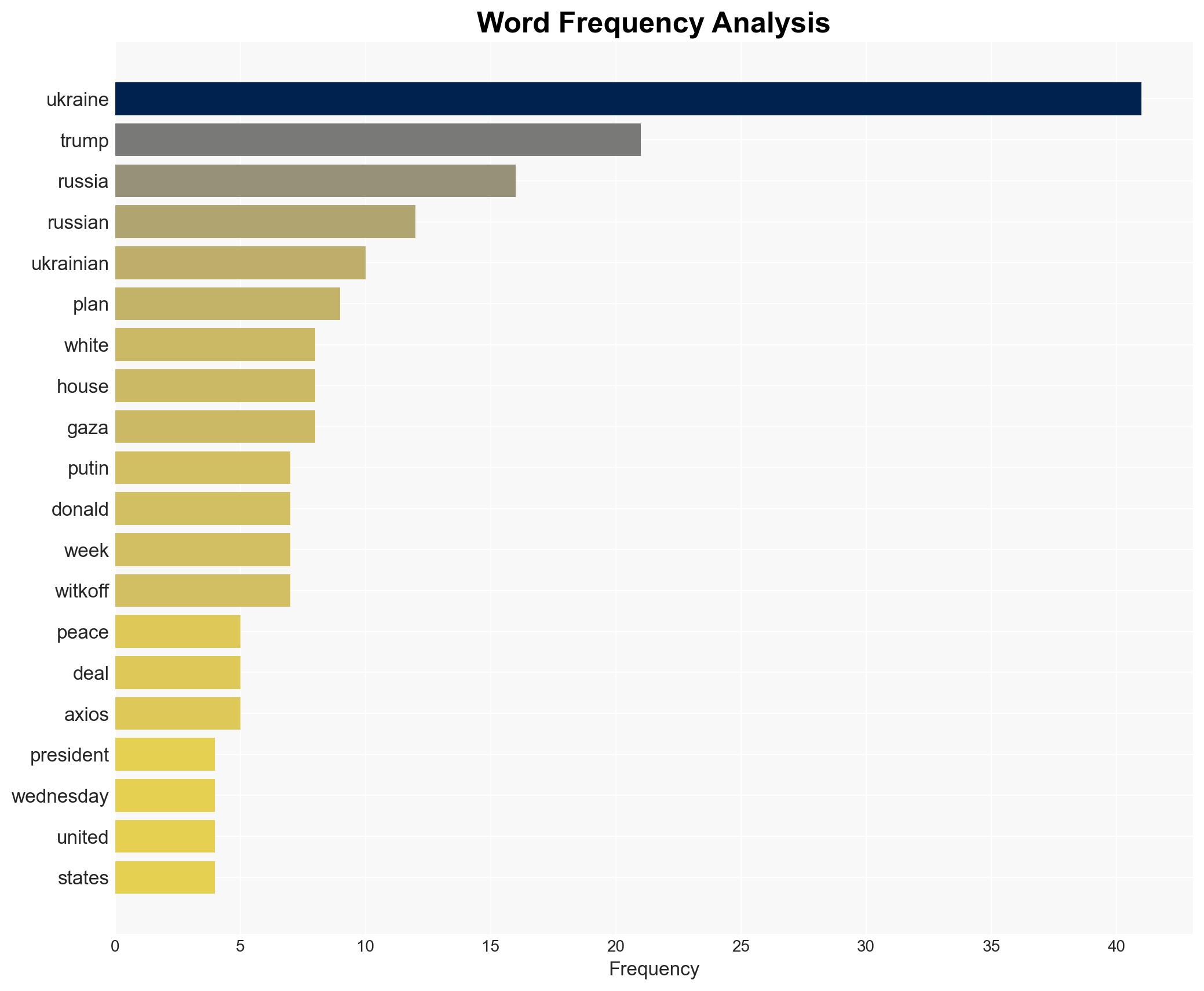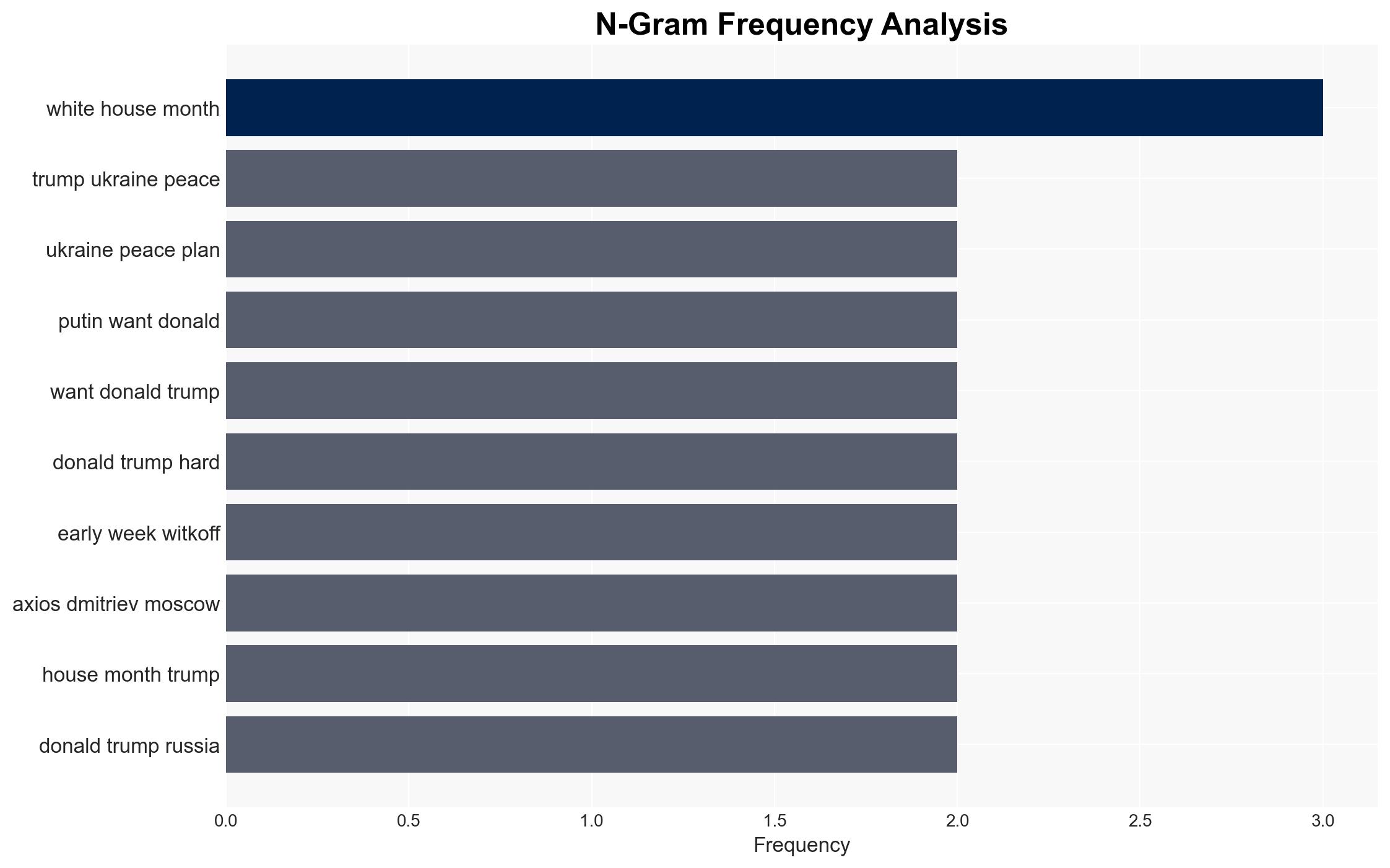Trumps Ukraine Peace Plan Is Everything Putin Could Want – The New Republic
Published on: 2025-11-19
AI-powered OSINT brief from verified open sources. Automated NLP signal extraction with human verification. See our Methodology and Why WorldWideWatchers.
Intelligence Report: Analysis of Trump’s Ukraine Peace Plan
1. BLUF (Bottom Line Up Front)
The strategic judgment is that Trump’s Ukraine Peace Plan is likely to favor Russian interests significantly, potentially undermining Ukraine’s sovereignty and security. The most supported hypothesis is that the plan is a strategic maneuver by Trump to realign U.S.-Russia relations, possibly at the expense of Ukraine’s territorial integrity. Confidence Level: Moderate. Recommended action includes diplomatic engagement with European allies to reinforce support for Ukraine and counterbalance any adverse effects of the plan.
2. Competing Hypotheses
Hypothesis 1: The peace plan is a genuine attempt by Trump to resolve the conflict, albeit with a bias towards Russian interests due to strategic realignment goals.
Hypothesis 2: The plan is a calculated move to destabilize Ukraine’s position, possibly influenced by personal or business interests involving Trump and his associates.
Hypothesis 1 is more likely due to the historical context of Trump’s foreign policy approach, which often emphasizes deal-making and realignment with Russia. However, the involvement of business partners raises concerns about potential conflicts of interest, lending some credence to Hypothesis 2.
3. Key Assumptions and Red Flags
Assumptions: The plan assumes Ukraine’s willingness to compromise on sovereignty for peace, and Russia’s genuine interest in a peaceful resolution.
Red Flags: The involvement of Trump’s business partner, Steve Witkoff, suggests potential personal interests. The plan’s alignment with Russian objectives raises questions about impartiality.
Deception Indicators: The rapid development and presentation of the plan without broad international consultation could indicate a lack of transparency or ulterior motives.
4. Implications and Strategic Risks
The plan’s acceptance could lead to significant geopolitical shifts, weakening Ukraine’s defensive capabilities and emboldening Russian aggression. Politically, it may strain U.S. relations with NATO allies and the EU, who may view the plan as undermining collective security efforts. Economically, instability in Ukraine could disrupt regional markets. Information warfare risks include potential Russian disinformation campaigns to sway public opinion in favor of the plan.
5. Recommendations and Outlook
- Engage in diplomatic efforts with European allies to reinforce support for Ukraine and counterbalance the plan’s effects.
- Enhance intelligence sharing with NATO to monitor Russian military movements and intentions.
- Best Scenario: The plan is revised to include broader international input, leading to a balanced resolution.
- Worst Scenario: Ukraine’s acceptance leads to further Russian territorial ambitions and regional instability.
- Most-likely Scenario: The plan stalls due to international pushback, maintaining the status quo but with increased tensions.
6. Key Individuals and Entities
Donald Trump, Vladimir Putin, Steve Witkoff, Kirill Dmitriev, Volodymyr Zelenskiy, Rustem Umerov.
7. Thematic Tags
Regional Focus, Regional Focus: Eastern Europe, U.S.-Russia Relations, Ukraine Sovereignty
Structured Analytic Techniques Applied
- Causal Layered Analysis (CLA): Analyze events across surface happenings, systems, worldviews, and myths.
- Cross-Impact Simulation: Model ripple effects across neighboring states, conflicts, or economic dependencies.
- Scenario Generation: Explore divergent futures under varying assumptions to identify plausible paths.
Explore more:
Regional Focus Briefs ·
Daily Summary ·
Support us





